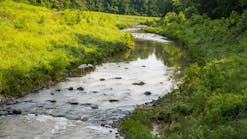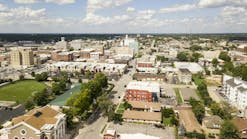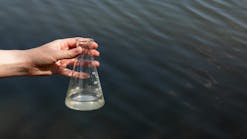
Last year, Water Efficiency’s editor, Laura Sanchez, wrote about water use and data centers. Each one consumes on average an Olympic-sized swimming pool’s worth of water every two days for cooling its equipment. She was talking specifically about the delicate balance for communities that want to attract tech companies but also want to protect their own resources, such as surface and groundwater; many data centers are located in relatively arid places like California (which has more than 800), Salt Lake City, and San Antonio.
I recently ran across a few other random facts about data centers in this review of a new book about the Internet and social media. “The world’s data centers already have roughly the same carbon footprint as the global aviation industry, even as people continue to speak of ‘the cloud’ as though it were a barely corporeal entity,” the article states. “If its rate of growth continues, by next year Bitcoin alone will account for the same level of carbon output as the entire United States.”
I mention all this not to pick on data centers particularly, but because it made me think about how quickly our use of resources evolves. For something that really didn’t exist in their current form until the 1990s, data centers have come to be a vital part of the way we live and do business—while still remaining something that the average person rarely thinks about or can even envision with much clarity. They’re using a tremendous amount of power and water, and they’re having an effect on the environments in which they’re located.
Laura commented in her blog that the data center industry has made many innovations in power use—relying more and more on renewable energy, for example—and may do the same with water use; the post generated some detailed comments about water reuse and whether water used for cooling and then evaporated can be considered part of the natural water cycle. (I’m greatly simplifying the comments, which you can read in full here.) These are the types of questions we’re hoping to see speakers and attendees debate at the first annual Western Water Summit, which both Laura and I are involved in putting together. The nexus between water and power; the breaking down of the silos between drinking water utilities, stormwater management, and agricultural water use; the strategies (or lack thereof) of communities facing long-term drought—all these and more are on the table.
You can find more information about the Western Water Summit, and can register or submit an idea for a presentation, at www.westernwatersummit.com.
Janice Kaspersen
Janice Kaspersen is the former editor of Erosion Control and Stormwater magazines.





